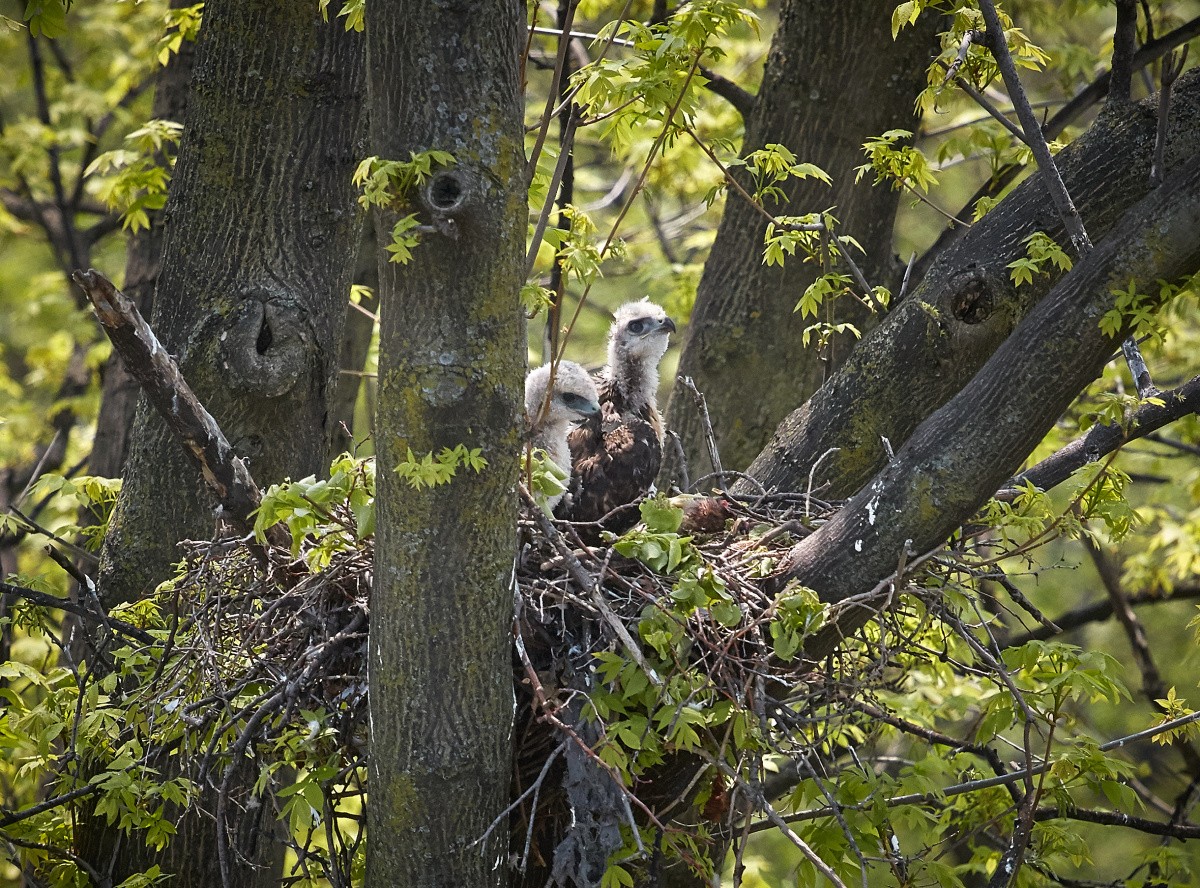Not hawkward at all
Meet the newest inhabitants of Grange Park – a family of red-tailed hawks.

For weeks now, AGO staff and visitors have been reaching for their binoculars, trying to get a glimpse of an exciting new installation. A family of red-tailed hawks has taken up residence in Grange Park and can be seen soaring around and occasionally landing on the AGO. Keen to learn more about our feathered friends, we sent a few questions to Mark Peck, Manager of the Schad Gallery of Biodiversity at the Royal Ontario Museum. Below is a snippet of that conversation.
AGO: Are red-tailed hawks indigenous to Toronto?
Peck: Red-tailed hawks are native to Toronto and are in fact found throughout much of North America except for tundra regions.
AGO: Do they mate for life?
Peck: Pairs usually remain together for life but if a death occurs, the remaining bird will take on another partner. They try to produce offspring every year and both parents are involved in the incubation of eggs and care of the young.
AGO: How long do babies spend in the nest?
Peck: The young usually stay in the nest for six or seven weeks but then stay close to the nest for another one or two weeks after they are able to take first flights.
AGO: What do hawks normally eat?
Peck: Hawks are carnivores but will eat a variety of food, from small mammals like mice and other rodents to birds and even squirrels.
AGO: Is the presence of hawks in a downtown park, considered a good sign or bad sign, from an ecology perspective?
Peck: Red-tails are doing very well in the city at the moment and in the last 30 years have started adapting more and more to an urban environment. They’ve been successful in Toronto parks because there is good food available, i.e. squirrels, pigeons, other small mammals and other birds.
AGO: The screeches a hawk makes, that kee-eeeee-arr sound, is it common to each bird?
Peck: Red-tailed Hawk calls are famous and have been put into shows like Game of Thrones, Tarzan movies and others. Almost all birds are able to call or vocalize in some form.
Did you know? Grange Park, a two-hectare green space in downtown Toronto, was originally part of the Grange estate built in 1820 by the Boulton family, who played an influential role in developing the young City of Toronto. In 1910, Harriet Boulton Smith bequeathed The Grange house and estate to the newly founded Art Gallery of Toronto for the purposes of building an art museum on the property. In 1911, the Gallery entered into an agreement with the City of Toronto to operate the land south of The Grange as a public park. This agreement still stands between the AGO and the City.
After you spend some time bird-watching, stop by for a visit at the AGO. Or better yet, come on inside! The view from our spiral staircase looking onto Grange Park is unparalleled. Admission to the AGO Collection and all special exhibitions is always free for AGO Members, AGO Annual Pass holders and visitors 25 and under. For more information, please visit the website.
Are you an AGOinsider yet? If not, sign up to have stories like these delivered straight to your inbox every week.

